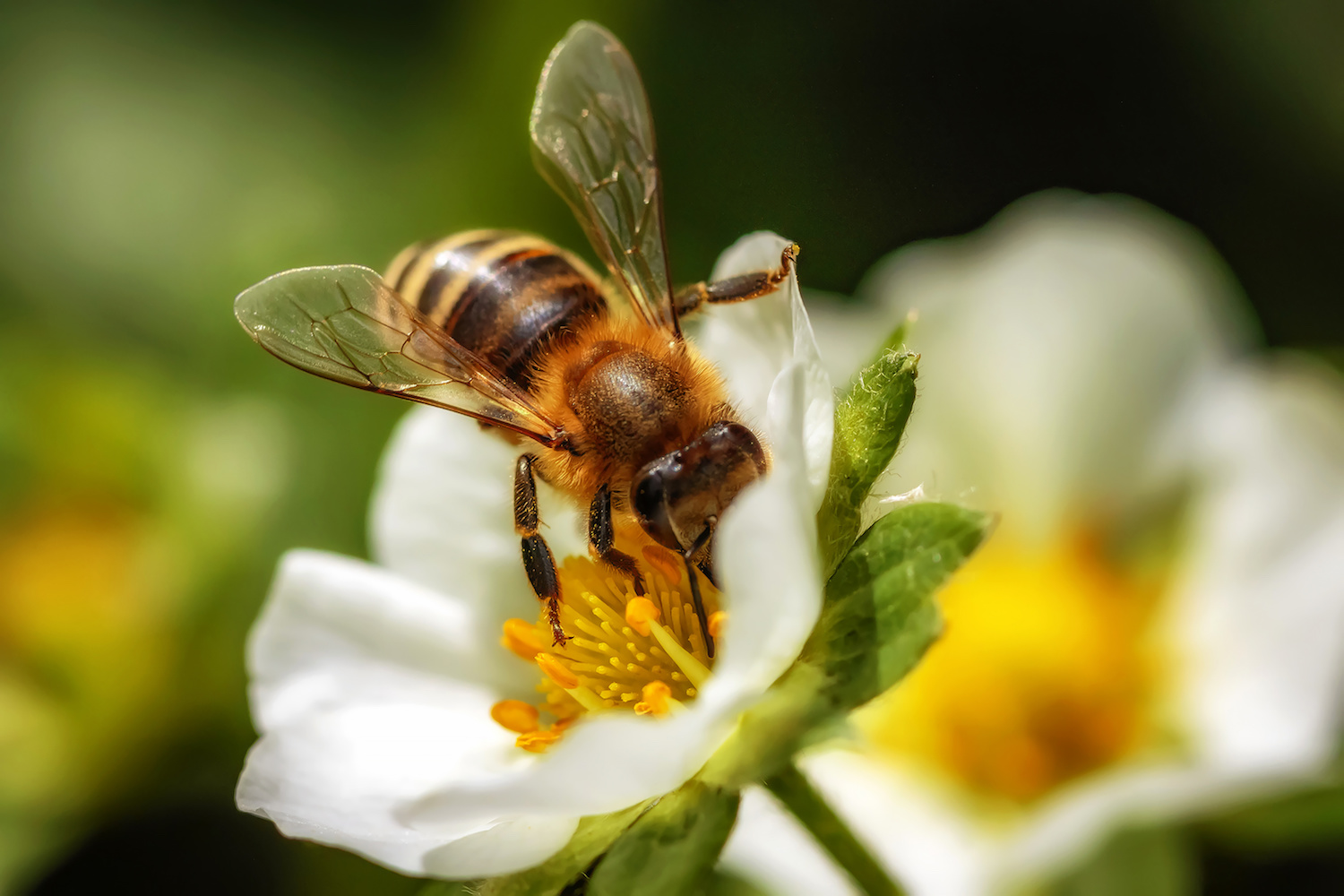Bordering crops with wildflower plantings is becoming an increasingly popular method to attract pollinators and pest predators. But are wildflower borders appropriate for all growers? Are there wildflower species that can actually hinder yields?
A recent Cornell University study, "Landscape context shifts the balance of costs and benefits from wildflower borders on multiple ecosystem services", tested the efficacy of wildflower strips under different conditions. Researchers selected 12 small New York state strawberry farms that represented a range of landscapes - from farms surrounded by natural habitats to farms surrounded by agricultural lands.
Researchers found that when the farm was in an area where 25% to 55% of the surrounding area contained natural lands, the wildflower borders were successful in attracting pollinators. Therefore, the wildflower borders indirectly boosted strawberry yields. The borders also became more effective at attracting pollinators over time, making those yield boosts grow too.
However, outside these natural areas (dubbed "Goldilocks zones" because they contain a "just right" amount of natural habitat), the borders actually attracted more strawberry pests, and did not attract any pest predators to a signifcant degree.
“We’re investing huge amounts of money on these programs and right now it’s not part of the policy to think about the landscape context of where these habitats are placed,” said Heather Grab, Postdoctoral Researcher and the Cornell study's first author.
Many wildflower species were shown to attract both pests and bees, but some species like fleabane (Erigeron annuus) were the least effective at luring bees and instead attracted the most pests.
The study researchers hope their findings will positively impact government programs that encourage the propagation of pollinator habitats on farms. For example, "If you wanted to optimize the wildflower patches, I would suggest we eliminate some of those from the list of recommended species in the plantings,” Grab said, referring to those wildflower species like fleabane that were found to be unhelpful to growers in the study.
Croptracker lets you track and compare yields over time so you can assess the efficacy of new treatments and conditions, like wildflower borders. Need a refresher on any of Croptracker's features? Head over to our Knowledge Base, where you'll find step-by-step tutorials as well as common troubleshooting tips and more. And as always, if you're ever stuck, never hesitate to e-mail us at support@croptracker.com or Live Chat with us by clicking the green speech bubble ![]() in your bottom right-hand corner. We're always happy to help you let Croptracker make your farm become more efficient, safe, and profitable!
in your bottom right-hand corner. We're always happy to help you let Croptracker make your farm become more efficient, safe, and profitable!
| Missed Last Week's Blog Post? NAFTA Revamped as USMCA |


